

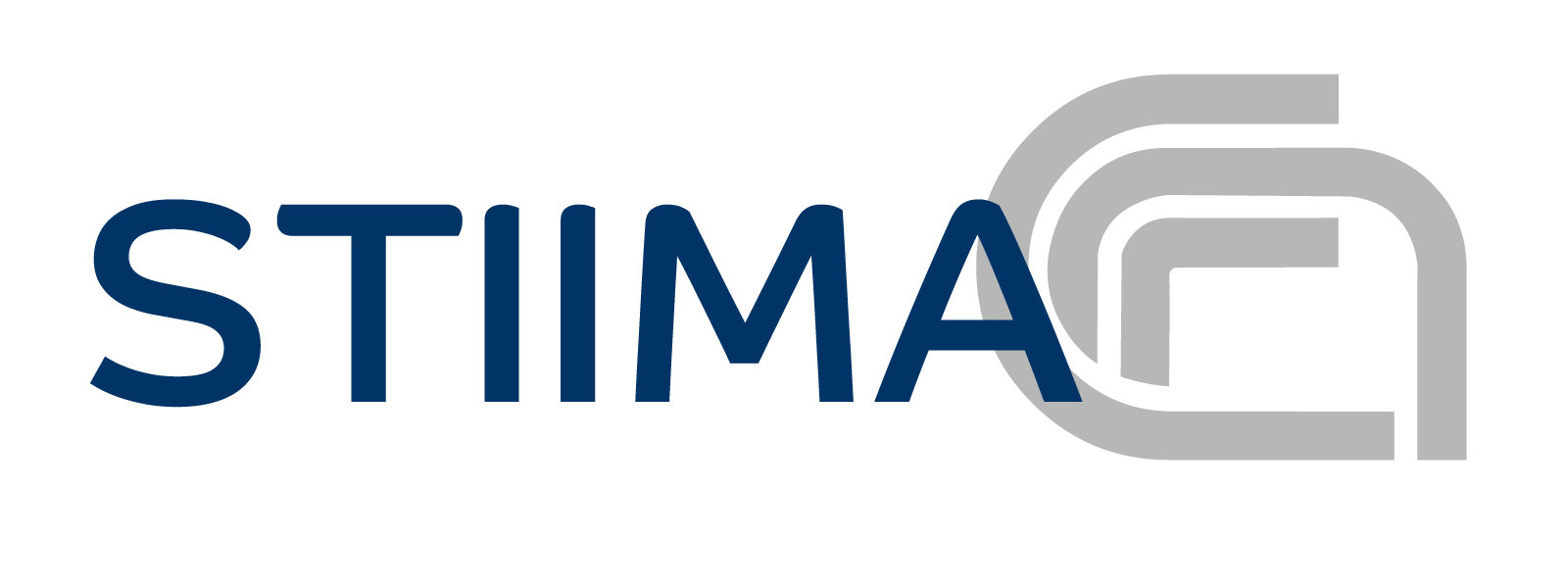

- Politecnico di Milano
- Univerzitet u Beogradu / University of Belgrade
- CNR STIIMA, Milano
- Grenoble INP - UGA
Menu : Objectives Organisation Realisations 2021 Realisations 2022
Objectives ↑ Top↑
The main objective of the AVATAR Erasmus+ project is to support and facilitate the adoption of VR/AR technologies in engineering curricula. Within the set of advanced digital technologies in fact, AR and VR have the following characteristics and advantages:
- AR is able to provide a more understandable perspective on engineering problems, using a three-dimensional experience (VR) to leverage on visuo-spatial ability of the students.
- AR is the right tool to deliver meaningful set of information to specific geometrical locations, providing the students a deeper understanding.
- VR/AR-enabled telepresence enables high-quality distance and self-learning, being able to provide the students a rich experience even if they cannot access laboratorial facilities and/or get in touch with real components.
To pursue this objective a set of workflows will be developed, describing and formalizing how to implement learning activities in engineering taking advantage of VR/AR tools. The workflows will be organized in three clusters:
- Learning approaches for experiencing/developing VR/AR technologies to support the use and implementation of AR/VR tools (e.g., how to build a 3D scene for VR, how to prepare and organize contents for VR/AR, how to address interactivity in VR/AR).
- Learning approaches using AR/VR within integrated engineering approaches to provide a better and deeper understanding of engineering problems (e.g., in the design of a manufacturing system and/or in the definition of detailed trajectories in robotized assembly processes).
- AR/VR as an innovative environment for learning assessment addressing address how to implement assessment tools (exercises, quizzes, polls, etc.) within VR/AR environments.
Projects Organisation ↑ Top↑
From 2020 every year, 5 students are selected from every country to particpate to the avatar semester. They are committed in a training program about XR technologies linked to Manufacturing processes.
Every project is an instanciation of one or more XR building block contributing to the management of a Digital Twin:
- Mechanism model translation towards XR environments
- Dynamics mechanism simulation
- API communication between blocks
- Integration of mechanism in various VR software (Unity3D, Babylon.js, etc)
- Selection of XR device
- Integration of Human interaction if the XR loop
- Creation of XR based Manufacturing use cases
- Creation of XR based training and evaluation program
The output of the program is both, the use case demonstrator developped by the student, but also the consolidation of the workflows to build XR applications, and obviously the training of the involved students.
Projects Realisations 2021 ↑ Top↑
On spring 2021, 18 students were involved in the AVATAR program. They produced content is reported on the Avatar Web Site
They mainly worked on two use cases :
- Hybrid Manufacturing Environment for a Machining Center. The objective of this use case will be to use XR technologies to create a digital twin of a automated working cell for the machining of industrial products.

- Hybrid Human- Robot Processes. The objective of this use case will be to use XR technologies to create a digital twin of a hybrid human/robot working cell for the welding and/or assembling.

And enabled up to 15 projects leading to full inteaction activity with the digital twins, illustrated by the two following examples :
- Achieving open architecture we are able to develop intercommunication between Physical and Digital Twin using variety of modules, peripherals and SDKs:

- Design a Human Machine Interface in AR (Hololens) for Digital Twin :
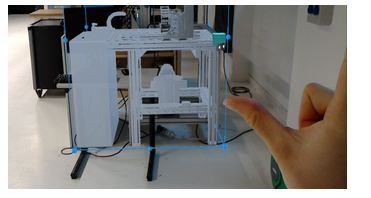

Projects Realisations 2022 from training to a joint learning lab in Belgrade ↑ Top↑
On spring 2022, 17 students were involved in the AVATAR program. The produced content is reported on the Avatar Web Site
They mainly worked on three use cases all about a digital twin of a production system (either a machine, a cobot or a robotic cell) . They opened new steps respect to 2021 session and fortunately after the COVID 19 crisis, in may 2022, it was possible to manage a joint learning lab in Belgrade. All the students all together to train themselves to a single use case about controlling a robot in a pick and place activity from CAD modelling to robot control and connexion to various devices including VR head mounted display. It matches the the AVATAR Erasmus+ project aim to support and facilitate the adoption of VR/AR technologies in engineering curricula.
The Serbian team had prepared 8 supervised work sessions to get to grips with the different concepts of a digital twin construction workflow. This was applied to the robots and peripherals available at the Department of Mechanics of the University of Belgrade.

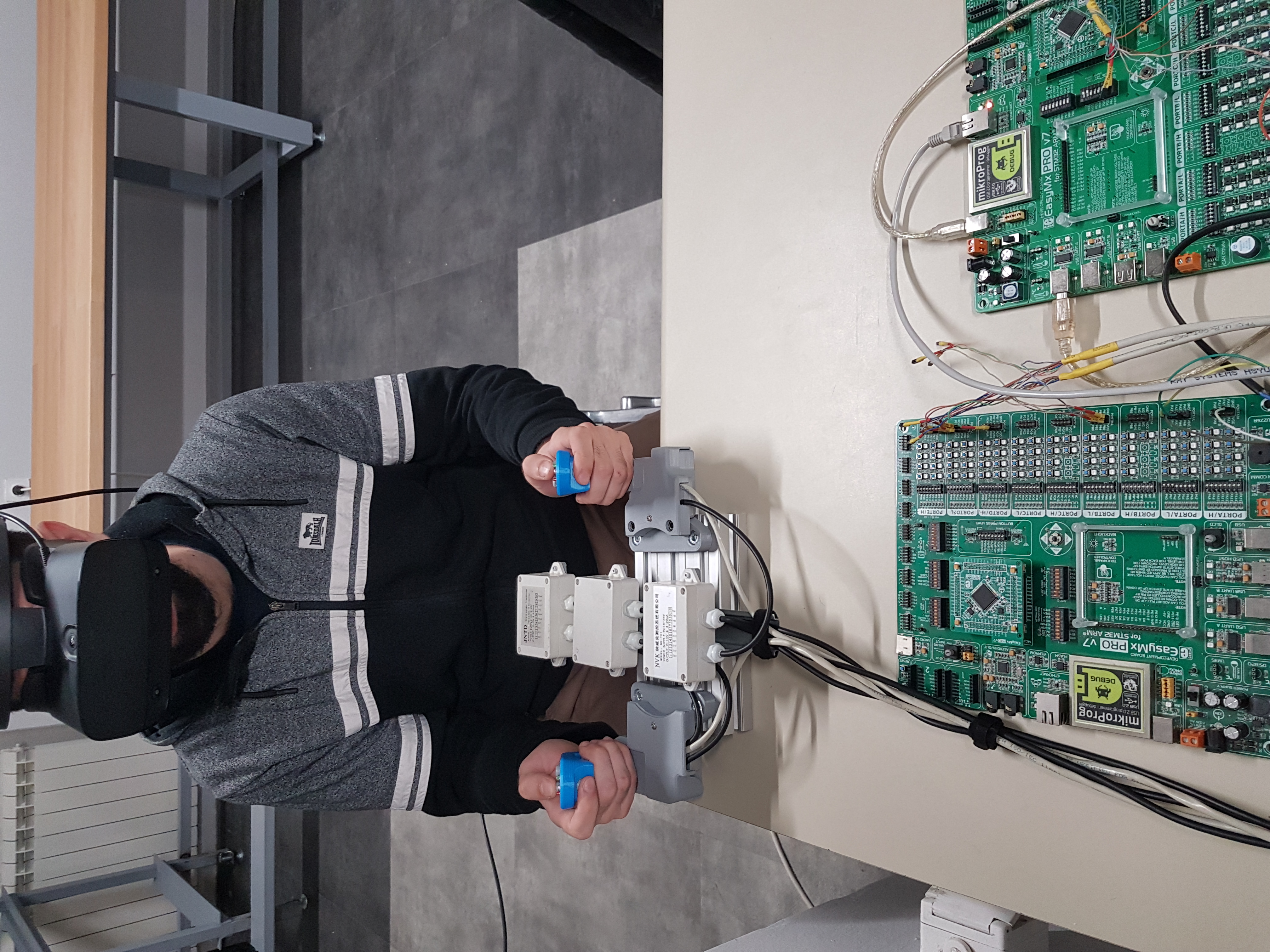

A huge prepartion work from Belgrade team
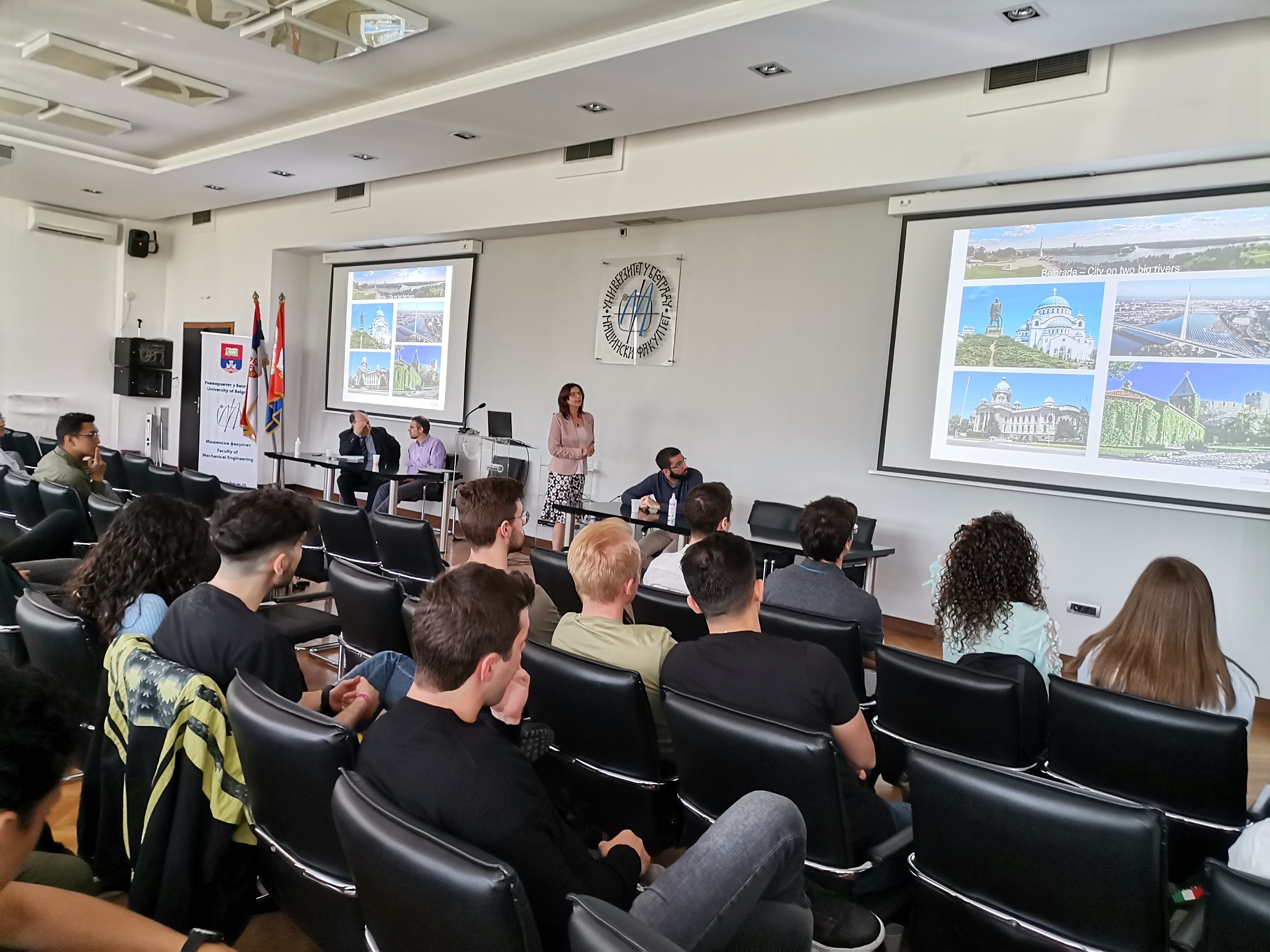
Welcome at Belgrade University
After a warm welcome, the students practised in these different sessions, and finally presented their results on the last half day. In just one week, students were able to implement the entire control chain of a remote robot for a pick and place activity, controlled from different interfaces including an immersive interface. In just one week, they were able to implement the entire control chain of a remote robot for a pick and place activity, controlled from different interfaces including an immersive interface. They were also able to compare the different interfaces available.


Direct or remote contol from physical world

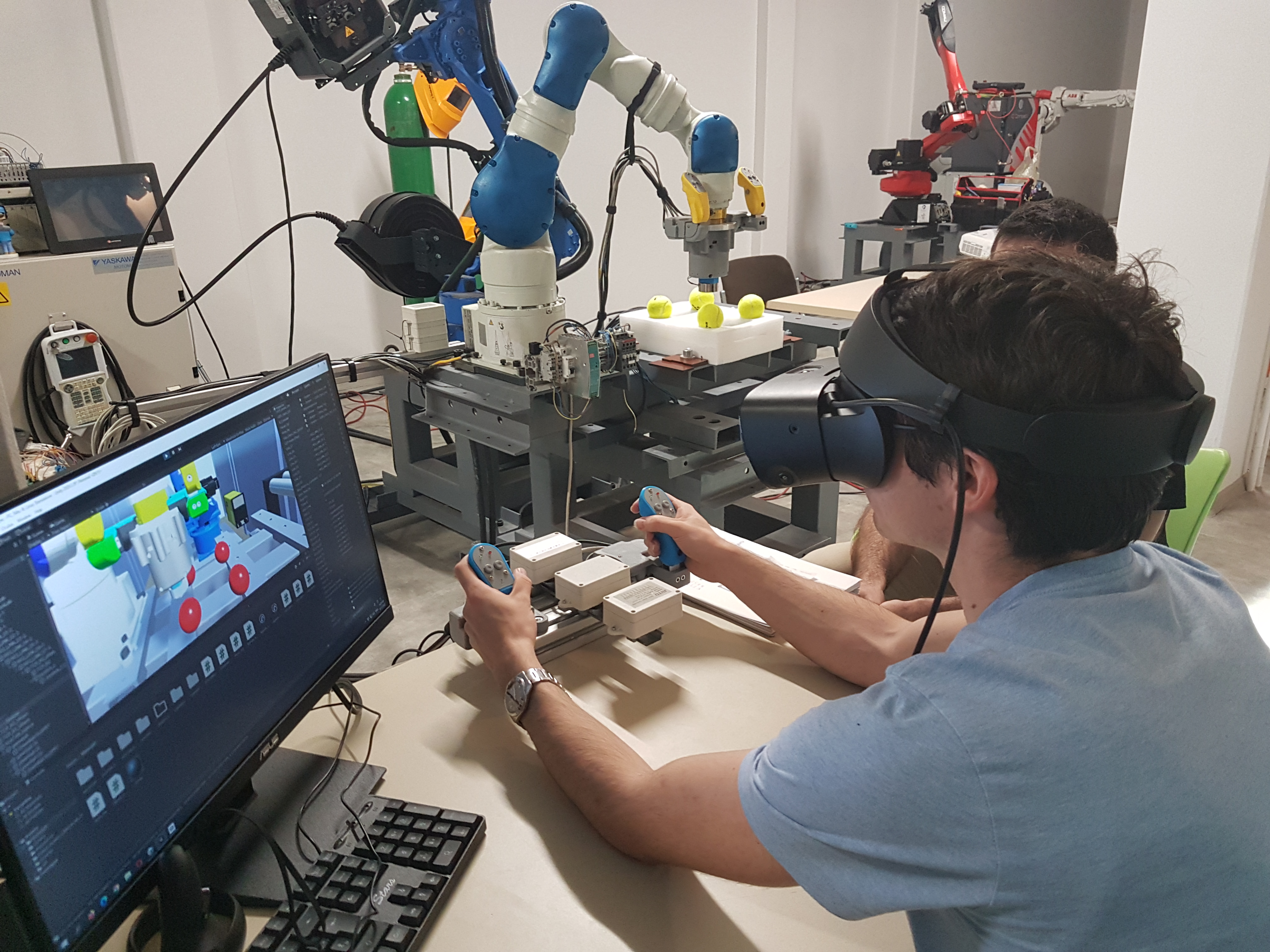
Direct or remote contol from virtual world

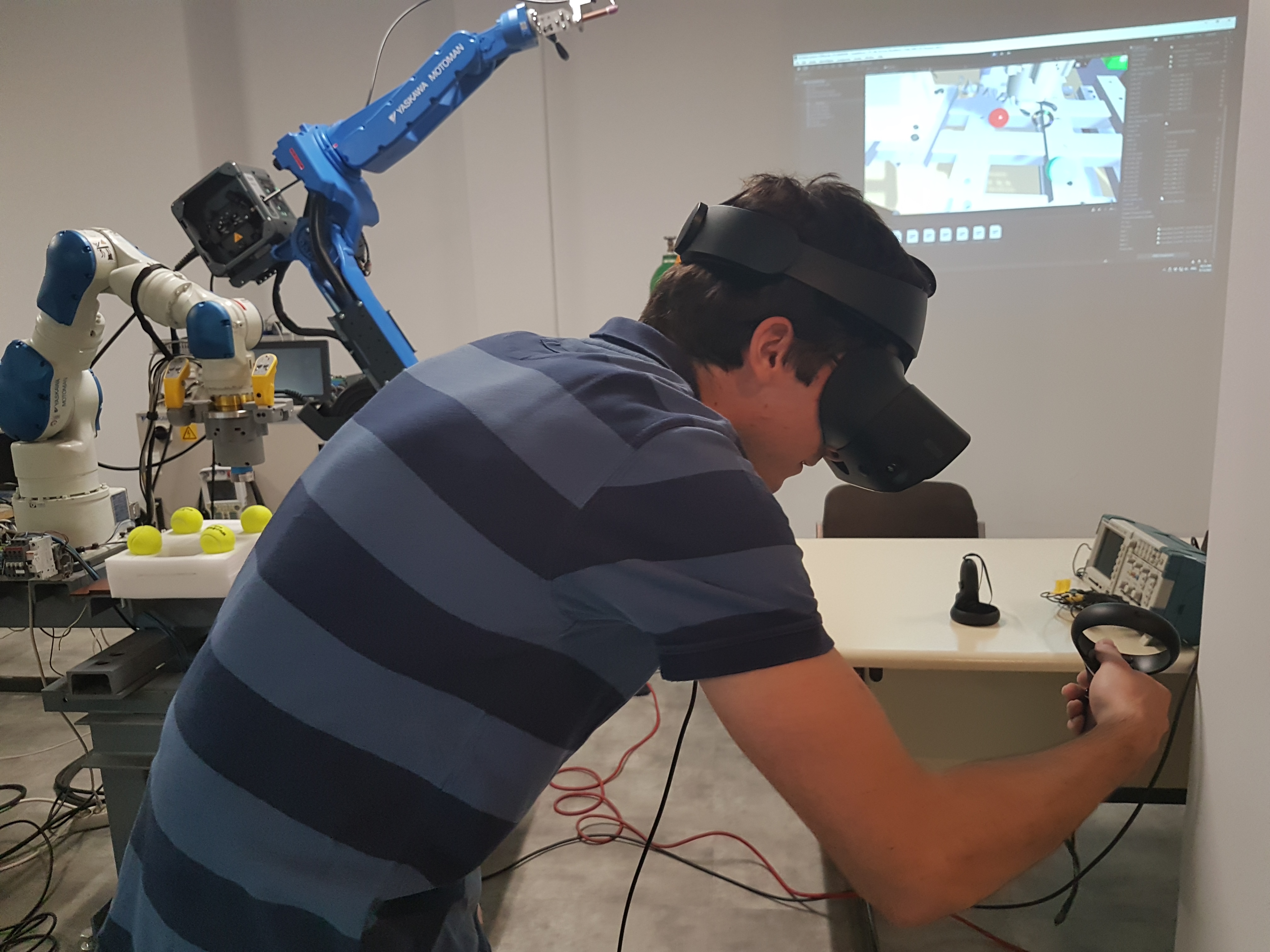
Full VR interactive control of either the real robot or its digital twin
In the end, it was a rich experience carried out in international collaboration that allowed the students to discover their counterparts of different nationalities and backgrounds while increasing their technical skills on a major subject related to Industry 4.0 technologies.

Nice young team networking at the European level
- Mechanism model translation towards XR environments
- Dynamics mechanism simulation
- API communication between blocks
- Integration of mechanism in various VR software (Unity3D, Babylon.js, etc)
- Selection of XR device
- Integration of Human interaction if the XR loop
- Creation of XR based Manufacturing use cases
- Creation of XR based training and evaluation program
Projects Realisations 2021 ↑ Top↑
On spring 2021, 18 students were involved in the AVATAR program. They produced content is reported on the Avatar Web Site
They mainly worked on two use cases :
- Hybrid Manufacturing Environment for a Machining Center. The objective of this use case will be to use XR technologies to create a digital twin of a automated working cell for the machining of industrial products.

- Hybrid Human- Robot Processes. The objective of this use case will be to use XR technologies to create a digital twin of a hybrid human/robot working cell for the welding and/or assembling.

And enabled up to 15 projects leading to full inteaction activity with the digital twins, illustrated by the two following examples :
- Achieving open architecture we are able to develop intercommunication between Physical and Digital Twin using variety of modules, peripherals and SDKs:

- Design a Human Machine Interface in AR (Hololens) for Digital Twin :


Projects Realisations 2022 from training to a joint learning lab in Belgrade ↑ Top↑
On spring 2022, 17 students were involved in the AVATAR program. The produced content is reported on the Avatar Web Site
They mainly worked on three use cases all about a digital twin of a production system (either a machine, a cobot or a robotic cell) . They opened new steps respect to 2021 session and fortunately after the COVID 19 crisis, in may 2022, it was possible to manage a joint learning lab in Belgrade. All the students all together to train themselves to a single use case about controlling a robot in a pick and place activity from CAD modelling to robot control and connexion to various devices including VR head mounted display. It matches the the AVATAR Erasmus+ project aim to support and facilitate the adoption of VR/AR technologies in engineering curricula.
The Serbian team had prepared 8 supervised work sessions to get to grips with the different concepts of a digital twin construction workflow. This was applied to the robots and peripherals available at the Department of Mechanics of the University of Belgrade.



A huge prepartion work from Belgrade team

Welcome at Belgrade University
After a warm welcome, the students practised in these different sessions, and finally presented their results on the last half day. In just one week, students were able to implement the entire control chain of a remote robot for a pick and place activity, controlled from different interfaces including an immersive interface. In just one week, they were able to implement the entire control chain of a remote robot for a pick and place activity, controlled from different interfaces including an immersive interface. They were also able to compare the different interfaces available.


Direct or remote contol from physical world


Direct or remote contol from virtual world


Full VR interactive control of either the real robot or its digital twin
In the end, it was a rich experience carried out in international collaboration that allowed the students to discover their counterparts of different nationalities and backgrounds while increasing their technical skills on a major subject related to Industry 4.0 technologies.

Nice young team networking at the European level





On spring 2022, 17 students were involved in the AVATAR program. The produced content is reported on the Avatar Web Site
They mainly worked on three use cases all about a digital twin of a production system (either a machine, a cobot or a robotic cell) . They opened new steps respect to 2021 session and fortunately after the COVID 19 crisis, in may 2022, it was possible to manage a joint learning lab in Belgrade. All the students all together to train themselves to a single use case about controlling a robot in a pick and place activity from CAD modelling to robot control and connexion to various devices including VR head mounted display. It matches the the AVATAR Erasmus+ project aim to support and facilitate the adoption of VR/AR technologies in engineering curricula.
The Serbian team had prepared 8 supervised work sessions to get to grips with the different concepts of a digital twin construction workflow. This was applied to the robots and peripherals available at the Department of Mechanics of the University of Belgrade.



A huge prepartion work from Belgrade team

Welcome at Belgrade University
After a warm welcome, the students practised in these different sessions, and finally presented their results on the last half day. In just one week, students were able to implement the entire control chain of a remote robot for a pick and place activity, controlled from different interfaces including an immersive interface. In just one week, they were able to implement the entire control chain of a remote robot for a pick and place activity, controlled from different interfaces including an immersive interface. They were also able to compare the different interfaces available.


Direct or remote contol from physical world


Direct or remote contol from virtual world


Full VR interactive control of either the real robot or its digital twin
In the end, it was a rich experience carried out in international collaboration that allowed the students to discover their counterparts of different nationalities and backgrounds while increasing their technical skills on a major subject related to Industry 4.0 technologies.

Nice young team networking at the European level
